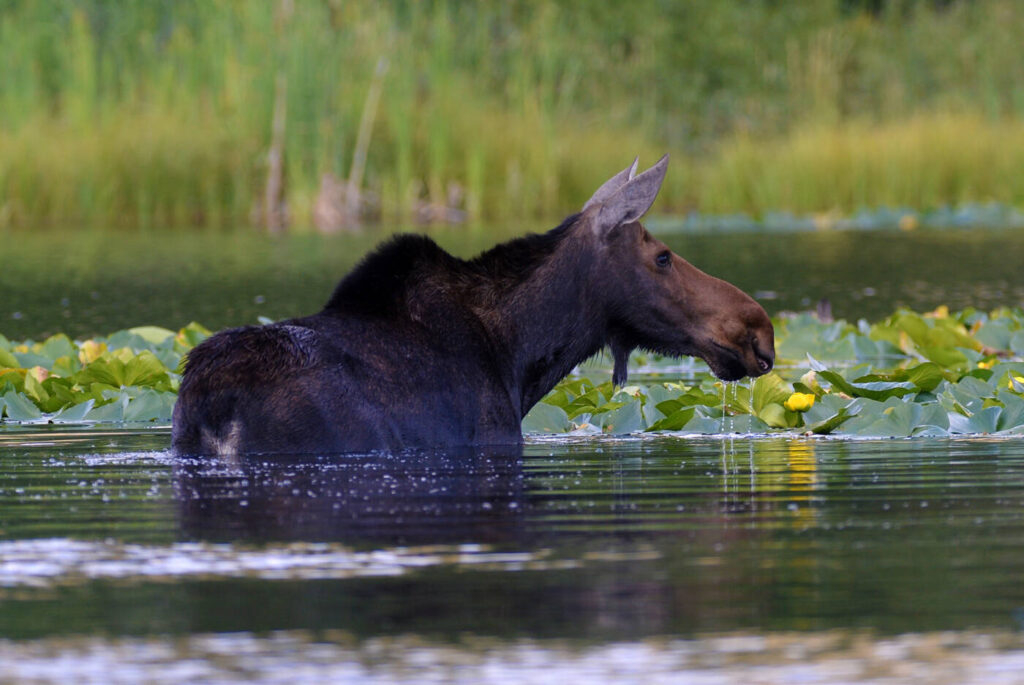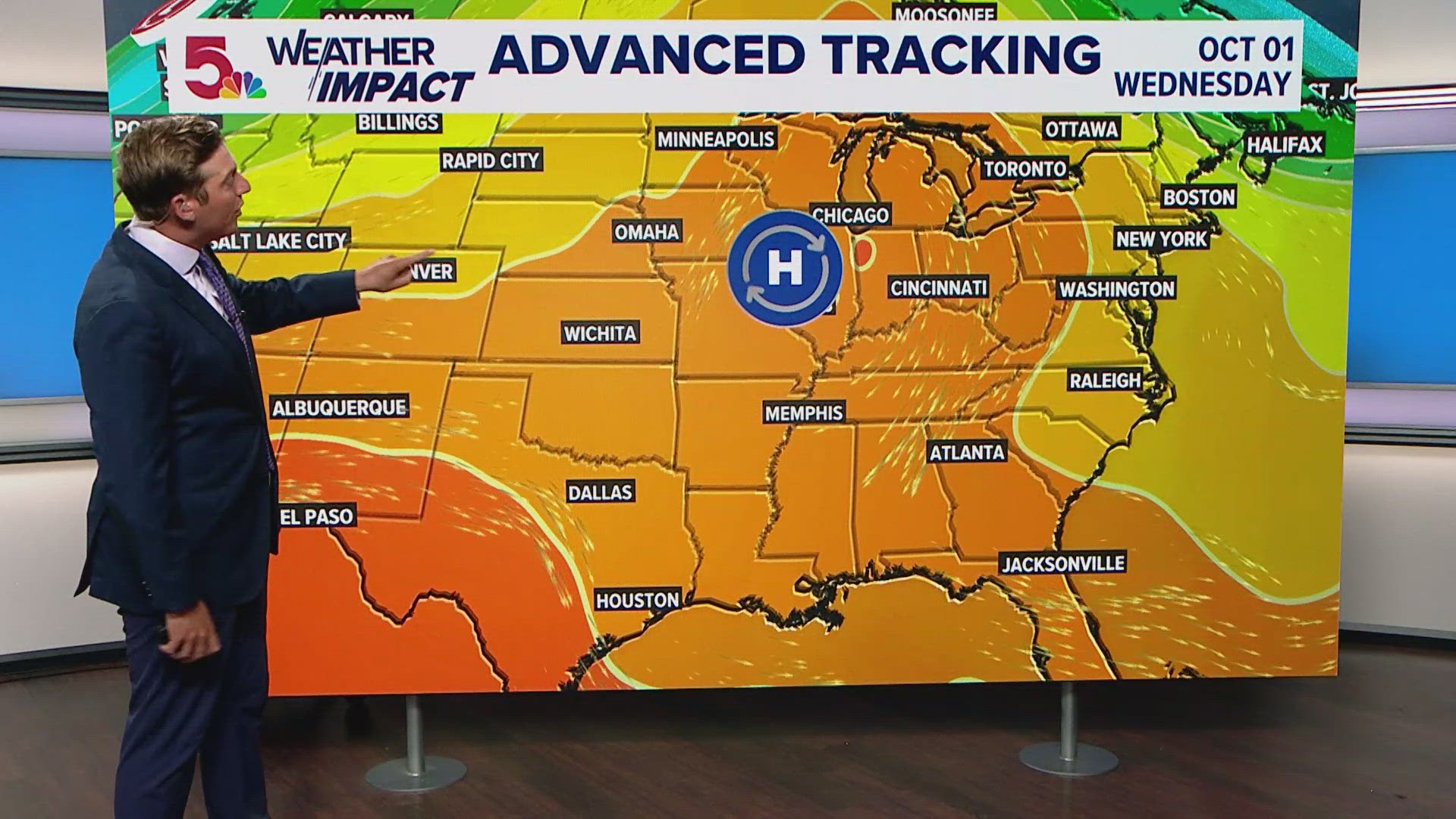Report on Moose Population Management in Colorado and Alignment with Sustainable Development Goals
Executive Summary
The successful reintroduction and management of the moose (Alces alces) population in Colorado serves as a significant case study in conservation and ecological restoration. Initially non-native in a stable capacity, the species was strategically reintroduced by Colorado Parks and Wildlife (CPW). This program not only re-established a thriving moose population but also aligns directly with several United Nations Sustainable Development Goals (SDGs), most notably SDG 15 (Life on Land), by restoring terrestrial ecosystems and promoting biodiversity. This report details the history of the program, its current status, and its contributions to global sustainability targets.
Historical Context and Reintroduction Program
The establishment of a permanent moose population in Colorado is a direct result of concerted conservation efforts spanning several decades. The timeline of this initiative is as follows:
- Mid-19th Century: Transient moose were documented in northern Colorado, having migrated from Wyoming, but failed to establish a stable breeding population.
- 1960s-1970s: CPW began the formal process of planning for the species’ introduction to the state’s ecosystems.
- 1978: The first official reintroduction event occurred, with CPW relocating 24 moose from Utah and Wyoming to the North Park region of Colorado.
- Subsequent Decades: CPW continued the program, transporting additional moose from neighboring states to ensure genetic diversity and population viability.
Current Population Status and Habitat
The reintroduction program has exceeded expectations, creating a robust and expanding population.
- By 2012, the breeding population was estimated at approximately 2,300 individuals.
- Today, the statewide population exceeds 3,000 moose.
- Colorado’s moose population is recognized as one of the fastest-growing in the lower 48 states.
- Primary habitats include North Park and the Grand Mesa, though their range has expanded to most of the state’s mountainous regions, typically in forested areas near lakes and marshes.
Alignment with Sustainable Development Goal 15: Life on Land
The Colorado moose program is a direct implementation of the principles outlined in SDG 15, which aims to protect, restore, and promote sustainable use of terrestrial ecosystems and halt biodiversity loss.
- Target 15.1: Conserve and Restore Terrestrial Ecosystems: By reintroducing a large herbivore, the program actively contributes to the restoration of natural ecological processes and balance within mountain ecosystems.
- Target 15.5: Protect Biodiversity and Natural Habitats: The initiative successfully re-established a species that was functionally absent, directly enhancing local biodiversity and demonstrating a commitment to protecting and reversing species loss.
- Target 15.7: Combat Poaching and Trafficking: The management of moose as a valued big game species, overseen by CPW, ensures its protection and sustainable management, countering threats from illegal activities.
Broader Implications for Sustainable Development
The program’s success extends to other interconnected SDGs:
- SDG 8 (Decent Work and Economic Growth): The presence of charismatic megafauna like moose supports a thriving wildlife tourism industry, contributing to sustainable economic growth and creating jobs in rural and mountain communities.
- SDG 11 (Sustainable Cities and Communities): As moose occasionally venture into urbanized areas along the I-25 corridor, the program highlights the importance of managing human-wildlife interactions to ensure public safety and foster coexistence, a key component of sustainable community planning.
- SDG 17 (Partnerships for the Goals): The program’s foundation was built on interstate partnerships between Colorado, Utah, and Wyoming, exemplifying the collaborative action required to achieve large-scale conservation and sustainability objectives.
Public Safety and Human-Wildlife Coexistence Protocols
In alignment with SDG 11’s goal of safe and resilient communities, public education on coexisting with moose is critical. CPW advises extreme caution during any encounter.
- Maintain a safe and respectful distance from the animal at all times.
- If an encounter occurs, back away slowly and do not approach.
- Be aware that moose can be extremely aggressive, especially when offspring or dogs are present.
- If a moose charges, seek immediate protection behind a large, solid object such as a vehicle, large rock, or tree.
Analysis of Sustainable Development Goals (SDGs) in the Article
1. Which SDGs are addressed or connected to the issues highlighted in the article?
- SDG 15: Life on Land – This goal is central to the article. It focuses on protecting, restoring, and promoting the sustainable use of terrestrial ecosystems and halting biodiversity loss. The article’s entire subject is the successful reintroduction and management of a wildlife species (moose) into Colorado’s terrestrial ecosystems, which directly aligns with the objectives of SDG 15. The work of Colorado Parks and Wildlife (CPW) in establishing a breeding population of over 3,000 moose is a clear example of an action aimed at enhancing local biodiversity and managing wildlife populations within their habitats.
2. What specific targets under those SDGs can be identified based on the article’s content?
-
Target 15.1: By 2020, ensure the conservation, restoration and sustainable use of terrestrial and inland freshwater ecosystems and their services, in particular forests, wetlands, mountains and drylands, in line with obligations under international agreements.
- The article supports this target by describing how a large mammal population has been successfully established in Colorado’s “mountainous regions” and “forested areas close to lakes and marshes.” The success of the moose population implies that these ecosystems are being conserved and managed in a way that can support such life, demonstrating effective stewardship of these specific environments.
-
Target 15.5: Take urgent and significant action to reduce the degradation of natural habitats, halt the loss of biodiversity and, by 2020, protect and prevent the extinction of threatened species.
- The article details a “significant action” taken by CPW to actively increase biodiversity in the state. By reintroducing moose, CPW has not only halted a potential local loss but has actively reversed it by establishing a stable and growing population. The program, which began in 1978 and has resulted in a population of over 3,000 moose, is a direct contribution to enhancing biodiversity.
3. Are there any indicators mentioned or implied in the article that can be used to measure progress towards the identified targets?
- Population Size of a Key Species: The article provides explicit quantitative data to measure the success of the reintroduction program. It tracks the moose population from the initial 24 individuals in 1978, to 2,300 by 2012, and “more than 3,000” today. This serves as a direct indicator of progress in wildlife conservation and population restoration.
- Population Growth Rate: The article mentions that Colorado has “one of the fastest growing populations of moose in the lower 48 states.” This is a qualitative but powerful indicator of the health and viability of the reintroduced population, suggesting that the habitat is suitable and management efforts are successful.
- Geographic Range of a Species: Progress is shown through the expansion of the moose habitat. The article notes that moose have “broadened their habitat to most of the state’s mountainous regions,” which indicates a thriving and expanding population, a key measure of restoration success.
- Implementation of Conservation and Management Plans: The entire initiative described is a state-level conservation plan executed by Colorado Parks and Wildlife. The article also points to public education efforts (“Learn more about living with moose from Colorado Parks and Wildlife”), which are part of a comprehensive management strategy to ensure human-wildlife coexistence. This represents an institutional indicator of progress.
Summary Table
4. Create a table with three columns titled ‘SDGs, Targets and Indicators” to present the findings from analyzing the article.
| SDGs | Targets | Indicators |
|---|---|---|
| SDG 15: Life on Land | 15.1: Ensure the conservation and restoration of terrestrial and inland freshwater ecosystems (mountains, forests, wetlands). |
|
| SDG 15: Life on Land | 15.5: Take urgent and significant action to halt the loss of biodiversity. |
|
Source: denvergazette.com







